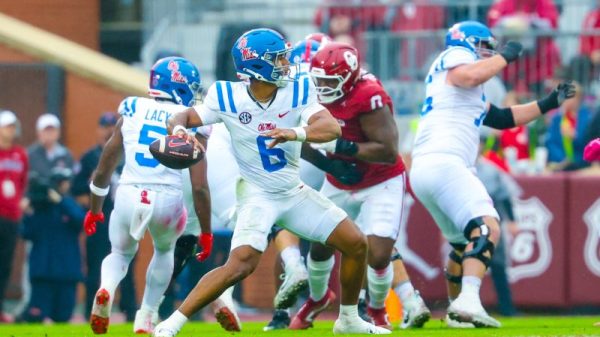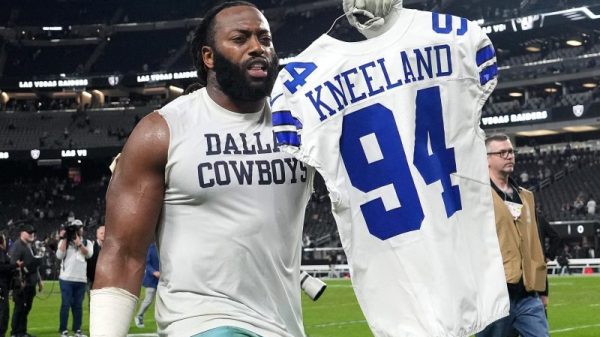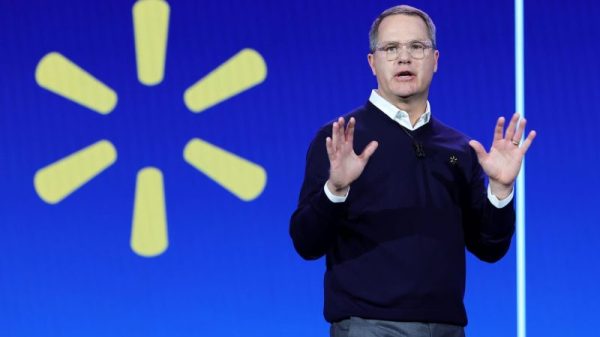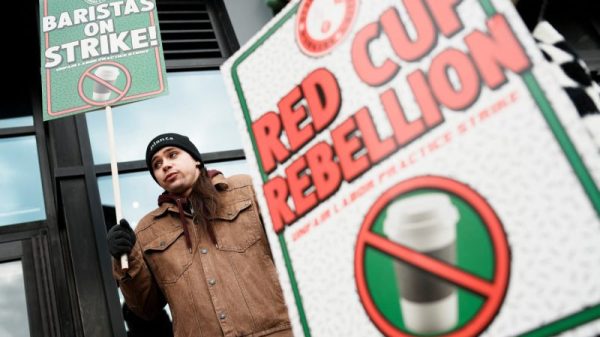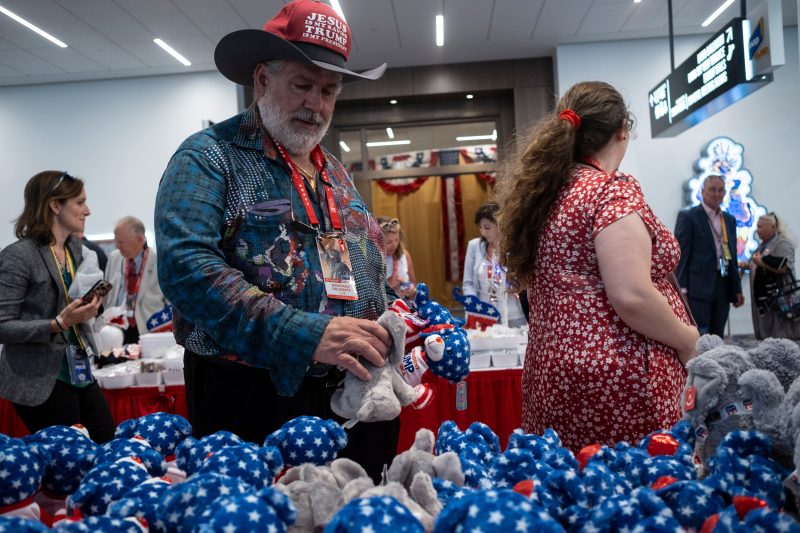MILWAUKEE — Former president Donald Trump is trying to present a more worker-friendly vision of the Republican Party at this week’s convention, but he has continued to make clear in private that he views himself as the best choice for billionaires and big business, according to donors who have attended fundraising events.
Even as Trump leans into populist themes that make some Republicans wary, he has told corporate leaders and major donors that he is the only bulwark against Democratic plans to raise taxes. Trump has even told wealthy backers that he needs their help to counter the financial heft of the unions that he is simultaneously trying to court. The convention has also showcased voices friendly to the nation’s business elite.
The two conflicting versions of the GOP’s future leave unsettled exactly how the former president would try to balance his party’s factions if he wins in November, probably setting up a reprisal of the tensions over economic policy that characterized his first term.
“Maybe we are living through a political realignment. Maybe in 2028, Wall Street and the Chamber of Commerce will be solidly Democrat and labor unions will be solidly Republican, but I wouldn’t bet on it,” said Michael Strain, director of economic policy studies at the conservative American Enterprise Institute.
A speech Monday by Teamsters President Sean O’Brien was the most tangible sign yet of Trump’s attempt to cast the party in a different light when it comes to the economy.
“When did you think you would see that at the Republican National Convention?” Trump campaign senior adviser Chris LaCivita asked reporters in Milwaukee on Tuesday, referring to O’Brien’s speech.
Trump had been courting the Teamsters before the convention. At a fundraiser this year at the Pierre hotel in New York, Trump told a room of billionaires, real estate executives and others that “the Teamsters really like me.” He said he had “used Teamsters all my life because of the concrete, all the concrete guys here are the Teamsters.”
“I’m going to get their vote anyway,” Trump told the guests. “The workers are going to vote for me. They’re not voting for that guy.”
GET CAUGHT UP
Stories to keep you informed
The Republicans are here. For Milwaukee, that’s complicated.
Amazon Prime Day causes workplace injuries, Senate probe finds
Why melting ice sheets are making our days longer
Housing, once the ticket to wealth in China, is now draining fortunes
Make your job less painful, at least physically
But most unions have endorsed President Biden for reelection this fall. Biden has also advanced populist economic themes while simultaneously raising huge sums of money from billionaire donors and other financial elites, although his policy agenda is much more in line with that of the union movement.
O’Brien didn’t endorse Trump on Monday; the Teamsters have yet to back a candidate. One prominent Republican strategist close to some of the party’s top donors, speaking on the condition of anonymity to provide a candid assessment, said that there was considerable grumbling about O’Brien’s convention speech, but that those people were loath to say it publicly because they know Trump is looking to court the unions and win their voters.
Trump’s rhetoric among business elites, though, hasn’t been as labor-friendly.
At a Business Roundtable event in June, Trump told CEOs that he would cut their corporate taxes again, pleasing people in the room, according to donors, who spoke on the condition of anonymity to discuss private remarks. In several fundraisers this year, Trump encouraged the richest CEOs to write large checks to him because unions were giving so much to Democrats. At another fundraiser in Texas, he urged the richest donors to give because “the Democrats get the money from the unions, millions and millions of dollars.”
He told them explicitly they needed to support him because he would lower their corporate taxes.
Some mainstream party leaders say they’re fine with this week’s framing. Virginia Gov. Glenn Youngkin, a former private equity executive, is firmly rooted in the GOP’s business-friendly traditions. But in an interview with The Washington Post in Milwaukee, he praised the choice of Sen. J.D. Vance (Ohio) as the vice-presidential candidate, pointing to his military service and up-by-the-bootstraps biography. Vance is viewed as closer to the party’s populist wing.
Youngkin said he does not see Vance’s selection as a signal that the GOP is turning toward more populist economic policies — primarily because it’s the president who sets the agenda, one Youngkin expects to be an extension of the first Trump administration, featuring more tax cuts and pared-back regulations.
“President Trump is going to set the direction of the country and he’s going to build a rip-roaring economy,” Youngkin said. “He’s done it before, he’s going to do it again.”
Zoomed out, the convention had plenty of room for corporate executives, too. Gary Cohn, a former Goldman Sachs executive who was one of Trump’s top economic advisers in the White House, was seen milling about. Large corporations host nightly parties.
In an interview with Bloomberg published Tuesday, Trump also called for cutting the corporate tax rate to 15 percent from 21 percent — something some of his advisers have said he would not try to do — while suggesting he could pick JP Morgan CEO Jamie Dimon, a billionaire, for treasury secretary.
Many corporate interest groups, like the Chamber of Commerce and the Business Roundtable, have long been wary of parts of Trump’s bedrock economic agenda, including ramping up the aggressive trade policy of his first term and cracking down on undocumented immigrants. On those points, Trump and Vance were already united before Vance joined the GOP ticket.
And some corporate-minded Republicans fear that their ability to check Trump’s most disruptive policies could wane. That might mean Trump does less to pursue initiatives — such as repealing the Affordable Care Act or cutting food stamps — that were priorities of the last generation of GOP policymakers. Meanwhile, a second Trump White House would also probably take steps that are anathema to Wall Street-aligned Republicans, such as escalating a global trade war and implementing mass deportations.
Trump put language in the Republican Party’s platform that the GOP now supports tariffs, according to people familiar with the drafting.
“He’s all big government, big government — move beyond Reaganism, all that stuff,” one Trump adviser, speaking on the condition of anonymity to share candid opinions, said of Vance. “And now he’s the heir apparent.”
Trump’s first term was characterized by frequent disputes between two factions of the administration over economic policy: business-friendly Republicans, such as Treasury Secretary Steven Mnuchin and Larry Kudlow, Trump’s top economic aide; and economic populists, such as strategist Stephen K. Bannon and trade advisers Peter Navarro and Bob Lighthizer, who pushed for greater confrontation with China.
Trump liked to play the camps off each other, and took some populist steps, including through higher tariffs on U.S. trading partners. But tariffs aside, his policies overwhelmingly reflected the priorities of Mnuchin or Kudlow, on everything from cutting corporate taxes, to appointing regulators friendly to Wall Street, to attempting to slash government spending on social programs.
Both sides have jockeyed for influence since Trump left office, hoping for prime position in a potential second administration. But Vance’s elevation may be the clearest signal that the economic populists are likely to have a greater say in the second term than they did in the first.
Sen. Josh Hawley (R-Mo.) told The Post that Vance is an “articulate spokesperson for what I call economic nationalism, economic populism, which is really about rebuilding American industry and protecting American jobs.”
Hawley said he was optimistic that Trump would pursue this policy agenda if reelected, including by significantly expanding tariffs and even by embracing labor legislation that Republicans have traditionally opposed.
“That’s been nowhere in the Republican Party of my lifetime to date, so it’s very significant,” Hawley said. “If the Republican Party is going to be a true majority party — not just win an election here and there, but become a majority party — they’re going to have to be the party of working people and blue-collar folks. And you’re starting to see that reality sink in.”
O’Brien’s call for Republicans to shift policies to better support blue-collar workers went over well with at least one delegate: Ed Cox, an attorney with expertise in finance law, who also is chairman of the New York State Republican Party. Cox described himself as “probably one of the people in that convention center who negotiated a union contract.” He said O’Brien echoed the paradigm shift that Trump has signaled he wants to see.
“Trump has been very consistent,” Cox said. “This is not a small change.”
Isaac Arnsdorf and Azi Paybarah contributed to this report.







